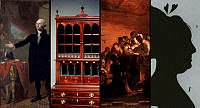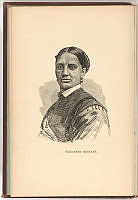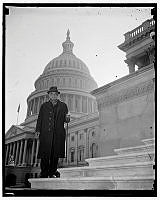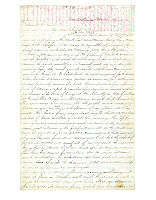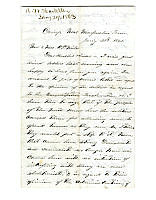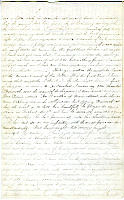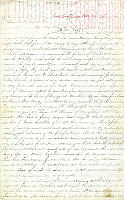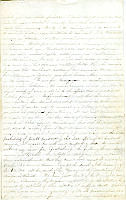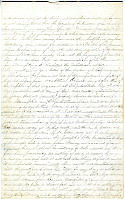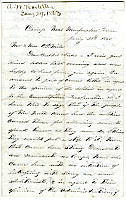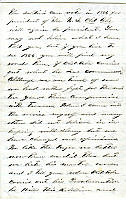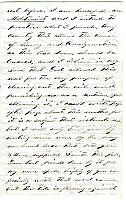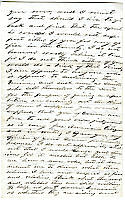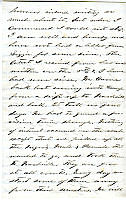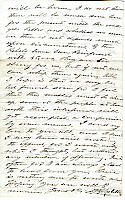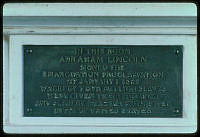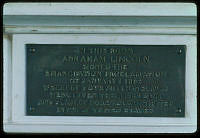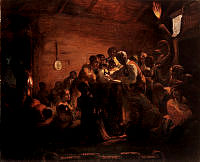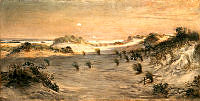Rubenstein Center Scholarship
Paul Cuffe & President James Madison: The Transatlantic Emigration Project & the White House
This article is part of the Slavery in the President’s Neighborhood initiative. Explore the Timeline
On May 2, 1812, Captain Paul Cuffe arrived at the White House for a meeting with President James Madison.1 The internationally renowned sea captain and entrepreneurial maritime trader planned to discuss two pressing issues with the president: the transatlantic emigration of African Americans to Africa, and the growing hostilities between the United States and Great Britain. Cuffe not only became “one of the first men of color” to formally meet with a sitting president but many scholars also consider him to be the first African American to lead a “back to Africa” effort in United States history.2

Captain Paul Cuffe 1812 / engraved for Abrm. L. Pennock by Mason & Maas.
Library of Congress
James Madison
Bureau of Engraving and PrintingCuffe was born on January 17, 1759, on Cuttyhunk Island, off the coast of Massachusetts.3 He was the son of Ruth Moses, a Wampanoag woman, and Kofi Slocum, a formerly enslaved man of Ashanti (modern-day Ghanaian) origin.4 Slocum arrived in New England aboard a slave ship sometime in the 1720s, purchased “his freedom from John Slocum in the 1740s,” and married Ruth Moses in 1747.5 The family lived on Cuttyhunk Island for approximately fifteen years where they “interacted with Wampanoag neighbors on the Elizabeth Islands and Martha’s Vineyard” and managed the properties of John Slocum that were primarily used for “grazing sheep in the warmer months.”6 On December 15, 1766, Kofi and Ruth purchased a 116-acre farm in the mainland town of Dartmouth, Massachusetts.7 When his father died in 1773, Paul changed his surname from “Slocum” to “Cuffe” (the Anglicized version of his father’s first name).8 Cuffe’s father bequeathed the family farm to Paul and his brother John.9 His father’s land, however, proved unproductive and afforded “little provision” for the other eleven family members.10 Cuffe and his siblings “labored under great disadvantages” and were “deprived of the means and opportunity” to acquire a basic education.11 Not easily discouraged, Cuffe taught himself to read and write, and later, with the assistance of a friend, he became skilled in navigation in a matter of weeks.12 These early skills equipped him to command ships in a series of profitable voyages he would later make to the Caribbean, England, Newfoundland, Spain, Africa, and several ports along the Atlantic coast of the United States.13

General View of Cuffee Farm and Landing Today. Taken from remains of Old Wharf
Library of CongressIn 1773, at the age of fourteen, Cuffe began his career as a crew member onboard a whaling ship bound for the West Indies.14 During this time, tensions were mounting between the United States and Great Britain over maritime trade, taxation policies, and representation in Parliament. Once the American Revolutionary War formally began on April 19, 1775, the British navy implemented an “undeclared commercial blockade” along the North American Atlantic coast and issued a “seize and detain” order against American shipping in September.15 In 1776, while onboard a whaling ship, Cuffe was captured by the British Navy and detained in a jail near New York harbor as a prisoner of war for three months.16 Following his release, Cuffe decided to begin his own maritime trading business and presented his plans for commercial intercourse with the State of Connecticut and Nantucket Island to his brother, David.17 Cuffe became the “master of a small covered vessel of twelve tons,” and during their ventures, the Cuffe brothers experienced many difficulties such as being robbed by pirates on two occasions.18 In 1784, Cuffe married Alice Abel Pequot—a descendant of the Wampanoag tribe to which his mother belonged.19 The couple settled in a small house on the Westport River.20 He soon procured a vessel of eighteen tons, in which he sailed to the banks of St. George, “in quest of codfish, and returned with a valuable cargo.”21 In addition to his reputation as a successful maritime entrepreneur, Cuffe was also known as a faithful Quaker, Federalist, and committed anti-slavery advocate with connections to prominent abolitionists in Baltimore, Philadelphia, New York, and London.22
As a man of color, Cuffe often experienced race-based inequities in a period marked by enslavement, subjugation, and the denial of rights and freedoms to African Americans and Native Americans.23 Weary of the seemingly dismal future for African Americans in the United States, the majority of whom were enslaved at that time, Cuffe contemplated possibilities for settlement in a location where freed African Americans could experience equality and justice. Through the transatlantic Quaker network, Cuffe first learned about the British colony of Sierra Leone and the African Institution, a British abolitionist and anti-slavery group.24 Cuffe secured the blessing of his fellow Friends to establish trade between Sierra Leone and the United States and was provided two certificates to travel to the colony.25 As Cuffe’s influence grew internationally, English abolitionists began to view him as a potential partner in ensuring the success of Sierra Leone for those formerly enslaved in the United States and England.26 At the turn of the century, Cuffe began making arrangements for the settlement of free African Americans in Sierra Leone.
The West African coastal site, later known as Sierra Leone, was home to the Mende and the Temne—the largest of the region’s many ethnic groups.27 Following the abolition of slavery in Britain in 1772, formerly enslaved individuals were termed “Black Poor,” and in 1786, the Committee for the Relief of the Black Poor formed plans for their repatriation in Sierra Leone.28 In addition to London’s “Black Poor” population, Black Loyalists, to whom the British gave land in Nova Scotia and Canada, would settle in Sierra Leone.29 These Loyalists were those formerly enslaved in the American colonies who obtained freedom from slavery by taking refuge with British forces during the American Revolution.30 This decision to emancipate the individuals enslaved in the rebelling colonies who would join the British army was issued on November 7, 1775, by Lord Dunmore, the royal governor of Virginia.31 The proclamation reflected military strategy rather than a commitment to abolitionist principles. In 1791, Britain established the colony of Sierra Leone to provide a home for these individuals in Africa. The colony presented possibilities for abolitionists and pro-slavery advocates alike.
For British abolitionists, Black emigration provided several advantages: a way to alleviate the Black residents of their subpar living conditions in London; an opportunity to include Black individuals in the Christianizing mission in Africa; and as a path for Black self-governance and freedom. Those in favor of the slave trade, but opposed to integration, considered settlement an effective way to rid Britain of its Black population.32 Similarly, for pro-slavery Americans, African-American settlement provided an opportunity to elude the challenges of emancipation and assimilation. Given that the United States had not yet abolished slavery, some argued that the emigration of the country’s free African-American population to Sierra Leone would prevent slave rebellions and violence between white and Black Americans.33 For some American proponents of abolition, such as Cuffe, Sierra Leone offered promises of freedom from racial injustice and the potential for economic prosperity. Cuffe envisioned that his settlement in Sierra Leone would position him to become a key figure in the economic development of the West African regional and international economy. He believed that if local production of exportable commodities throughout West Africa increased alongside the development of local shipping capabilities, the need for participation in the international slave trade and thus, the number of enslaved individuals exported, would eventually decrease.34 In effect, Cuffe’s theory would contribute to the abolition of the slave trade, and bring about a West African transatlantic economy on par with that of the United States and Europe.35 In 1810, Cuffe embarked on his first trip to the British colony of Sierra Leone to explore the possibilities for African-American settlement.36
In 1810, Cuffe and his all-African-American crew aboard the Traveller made two voyages to Freetown, Sierra Leone, where they remained for three months at a time.37 Upon arrival, Cuffe was treated with “great kindness” by the governor and he proposed a number of “improvements.”38 After determining the colony a suitable location for settlement, Cuffe sailed to England where he was granted an audience before the African Institution.39 The institution agreed to “defray the expenses of seven immigrants” to alleviate a portion of the initiative’s cost and would provide them with land and farming provisions upon arrival.40 Also, during his visit, Cuffe helped establish the “Friendly Society of Sierra Leone,” a trading organization involving the Black settlers and natives, which he hoped would encourage mass emigration to the colony.41 Cuffe envisioned that these emigrants would promote the Christian faith, establish business enterprises, and advocate for the abolition of slavery.42 In 1812, explaining his interest in the colony, Cuffe stated:
Having been informed that there was a settlement of people of colour at Sierra Leone under the immediate guardianship of a civilized power, I have for these many years past felt a lively interest in their behalf, wishing that the inhabitants of the colony might become established in the truth, and thereby be instrumental in its promotion amongst our American brethren. It was these sentiments that first influenced me to visit my friends in this colony, and instead of repenting, I have cause to rejoice in having found many who are inclined to listen and attend to the precepts of our holy religion.43
…our prayer to God is, that our brethren who live in distant lands and are held in bondage, and groan under the galling chain of slavery; that they may be liberated, and enjoy the liberty which God has granted unto all his faithful saints.44

Defeat of the English Boat Guerriere by the American Boat Constitution
White House Collection/White House Historical AssociationOn April 19, 1812, the Traveller was seized by customs officers in Newport, Rhode Island on its return from Sierra Leone.45 Carrying both African and British goods, Cuffe’s cargo was confiscated per President James Madison’s Nonintercourse Act of 1811, which prohibited trade with Britain.46 Armed with “letters of support and introduction” from several prominent Federalists, Cuffe traveled to Washington, D.C. seeking an audience with the president the following month.47

1812 Copy of a letter to James Madison (President) from Asher Robbins
Cuffe, Paul Personal and Family Papers, Westport Town HallAt this time, members of Madison’s Democratic-Republican Party were pressuring the president to consider military action against Great Britain as British forces continued to seize American cargo and impress American sailors into the Royal Navy.48 Although the odds of recovering his property were against him, Cuffe was granted an audience with President Madison at the White House on May 2, 1812—about six weeks before the official declaration of war on Great Britain, which would come on June 18.49

Paul Cuffe to James Madison, June 6, 1813. Also addressed to the United States Congress.
Library of CongressDuring their meeting, Cuffe, addressing President Madison, declared: “James, I have been put to much trouble, and have been abused...I have come here for thy protections and have to ask thee to order thy Collector for the port of Norfolk to clear me out for New Bedford, Massachusetts.”50 President Madison, aware that Quakers do not address others with honorific titles, did not interpret Cuffe’s boldness as disrespect, but rather was receptive to Cuffe’s cause.51 Following the meeting, President Madison arranged to have Cuffe’s cargo and ship returned and expressed interest in Cuffe’s plans to settle African Americans in Sierra Leone.52 Having been received favorably, Cuffe submitted a petition to President Madison and Congress for a license to trade with Sierra Leone on June 16, 1813.53
Your petitioner… solicits your aid so far as to grant permission that a vessel may be employed (if liberty can also be obtained from the British Government) between this country and Sierra Leone, to transport such persons and families as may be inclined to go as also, some articles of provision, together with implements of husbandry and machinery for some mechanic arts and to bring back such of the native productions of that country as may be wanted. For although pecuniary profit does not enter into caculation [sic] in the object in contemplation… the expence [sic] would fall too heavy on your petitioner, and those of his friends who feel disposed to patronize the undertaking. Your petitioner therefore craves the attention of congress to a concern which appears to him very important to a portion of his fellow creatures who have been long excluded from the common advantages of civilized life, and prays that they will afford him and his friends such aid as they in their wisdom may think best.54

1812 Paul Cuffe Petition by Secretary of the Treasury, Albert Gallatin
Cuffe, Paul Personal and Family Papers, Westport Town HallOn January 7, 1814, Congress introduced a measure allowing Cuffe to undertake a commercial voyage to Sierra Leone.55 The bill passed the Senate but was ultimately defeated in the House.56 Neither the British nor United States governments ever granted Cuffe a license to trade, yet he persisted with his plans.57 Once the War of 1812 ended, Cuffe and thirty-eight African Americans set sail for Sierra Leone on December 10, 1815.58 Cuffe personally bore the cost of the venture as the African Institution failed to deliver on its promise of financial support.59 When they arrived on February 3, 1816, Cuffe’s passengers—ranging in age from eight months to sixty years—became the first African Americans who “willingly returned to Africa” through an African-American initiative.60

1815 Catalogue of the Families onboard the Brig Traveller going from America to Sierra Leone in Africa
Cuffe, Paul Personal and Family Papers, Westport Town HallThe topic of emigration to Africa was a contested matter among African Americans.61 Some supported settlement in Sierra Leone hoping to find freedom from the racial oppression and injustice which they were subjected to in the United States.62 Others believed that African Americans should remain in the United States to fight for the abolition of slavery and full legal rights as citizens, and furthermore, that emigration to Africa was simply “the circuitous route through which they must return to perpetual bondage.”63 In January 1817, a massive gathering of free African American men met at Bethel Church in Philadelphia to consider a proposal from the American Colonization Society (ACS).64 The ACS was formed in 1816 to send free African Americans to Africa.65 Many free Blacks were suspicious of the ACS because its membership was dominated by owners of enslaved individuals and it excluded African Americans from membership.66 Some leaders were “mildly sympathetic, with thoughts of Paul Cuffe in mind,” however, the congregation unanimously agreed to renounce the plan.67
Whereas our ancestors (not of choice) were the first successful cultivators of the wilds of America, we their descendants feel ourselves entitled to participate in the blessings of her luxuriant soil, which their blood and sweat manured; and that any measure or system of measures, having a tendency to banish us from her bosom, would not only be cruel, but in direct violation of those principles, which have been the boast of this republic.68
Resolved, That we view with deep abhorrence the unmerited stigma attempted to be cast upon the reputation of the free people of color, by the promoters of this measure, ‘that they are a dangerous and useless part of the community,’ when in the state of disfranchisement in which they live, in the hour of danger they ceased to remember their wrongs, and rallied around the standard of their country.69
Resolved, That we never will separate ourselves voluntarily from the slave population in this country; they are our brethren by the ties of consanguinity, of suffering, and of wrong; and we feel that there is more virtue in suffering privations with them, than fancied advantages for a season.70

American Colonization Society to James Madison. Membership Certificate. 1816.
Library of CongressAlthough some African Americans rejected efforts on behalf of white-led institutions to settle free Blacks in Africa, most approved of Cuffe’s well-intentioned plans for the freedom and prosperity of his people. Cuffe planned to make one voyage per year, in which he would transport African Americans to Sierra Leone and return to the United States with valuable cargo.71 Cuffe received an English land grant to provide settlers with tracts of land and he personally supplied one year’s worth of farming provisions per settler.72 Cuffe’s initiative, however, was short-lived. Upon his return from Sierra Leone in 1816, he became seriously ill and died on September 7, 1817.73 Despite having made only one successful trip, knowledge of Cuffe’s “back to Africa” effort was widespread and influenced other nineteenth century African Americans—such as Henry Highland Garnet, Martin R. Delany, and Bishop Henry McNeal Turner—to consider the prospect of settlement in Sierra Leone, Haiti, and Liberia.
Following the example of the British African Institution, across the Atlantic Ocean Americans laid the foundations for their own institutional-level settlement initiatives. Like its British counterpart, the ACS was equally fraught with competing motives and goals. Although the ACS attracted abolitionists—who believed that African Americans would never be treated as equal citizens in the United States—it was primarily sponsored by the owners of enslaved individuals who were concerned with removing the presence of free African Americans from the United States, rather than with supporting African development. The leaders of the ACS sought Cuffe’s endorsement on the basis that they shared a common goal of settling freed African Americans in Africa.74 Given the discrepancy between Cuffe’s motives and those of the ACS, Cuffe declined to support the society.75 Despite lacking Cuffe’s blessing, the ACS continued to grow in influence and even attracted the espousal of American presidents.
President Madison was a strong supporter of the ACS and would later become its third president in 1833.76 President Madison was an early advocate for African-American settlement and wrote in 1819 that “the freed blacks ought to be permanently removed beyond the region occupied by or allotted to a White population.”77 Other prominent American politicians who supported the settlement project included Henry Clay, a founder of the ACS who, as a senator from Kentucky, advocated on the society’s behalf in Congress, and who succeeded President Madison as its fourth president from 1836 to 1849.78
The abolition of slavery and the transatlantic slave trade, tensions with Britain, institutional colonization and abolitionist efforts, and African-American-led “back to Africa” initiatives all shaped the nation during the eighteenth century. At the center of these events was the pioneering figure of Paul Cuffe. His expansive maritime travels and activism for people of color spanned from English ports to the White House, where he presented his plans for improving the livelihood of his fellow African Americans in Sierra Leone. A monument was erected in commemoration of Cuffe’s legacy on June 15, 1913, dedicated by Horatio P. Howard, Cuffe’s great-grandson.79 On the grounds of the Friends’ Meeting at Central Village in Westport, Massachusetts, the five-foot stone monument is located near the graves of Paul Cuffe and his wife with the inscription: “In memory of Captain Paul Cuffe: Patriot, Navigator, Educator, Philanthropist, Friend. A Noble Character.”80 The pursuit of African-American liberties abroad did not end with Cuffe, but rather, many nineteenth-century African Americans built upon his legacy. For example, in 1818, Prince Saunders, a free African-American man from Boston, traveled to several African-American communities promoting emigration to the newly independent nation of Haiti at the request of King Henri Christophe.81 Perhaps the most well-known figure associated with the “back to Africa” movement, Marcus Garvey (1887-1940), sought to establish an independent Black state in Liberia among other locations around the world.82

Dedicated June 15th, 1913, Rev, Tom A, Sykes of the Westport Society of Friends officiating
Library of CongressThe prospect of transatlantic emigration of African Americans to Africa attracted a host of actors who for varying reasons, became invested in the project. Ranging from President James Madison and Senator Henry Clay to Paul Cuffe and Prince Saunders, these figures engaged in an international discourse that brought to light many of the social, political, and economic underpinnings of Black settlement or emigration to Africa. In the United States, these concerns would challenge the nation’s ability to fulfill its most cherished principles for all Americans.
About the Author
Tianna joined the Association as a student fellow in September 2020 while pursuing her M.A. in Global and Comparative History at Georgetown University. As a fellow, she primarily assists with the Slavery in the President’s Neighborhood initiative. She has previously worked on a collaborative digital history project between the Organization of American Historians and the National Parks Service, titled “Escaping Slavery, Building Diverse Communities.” She is a native of Florida and holds a B.A in History from Georgetown University.


